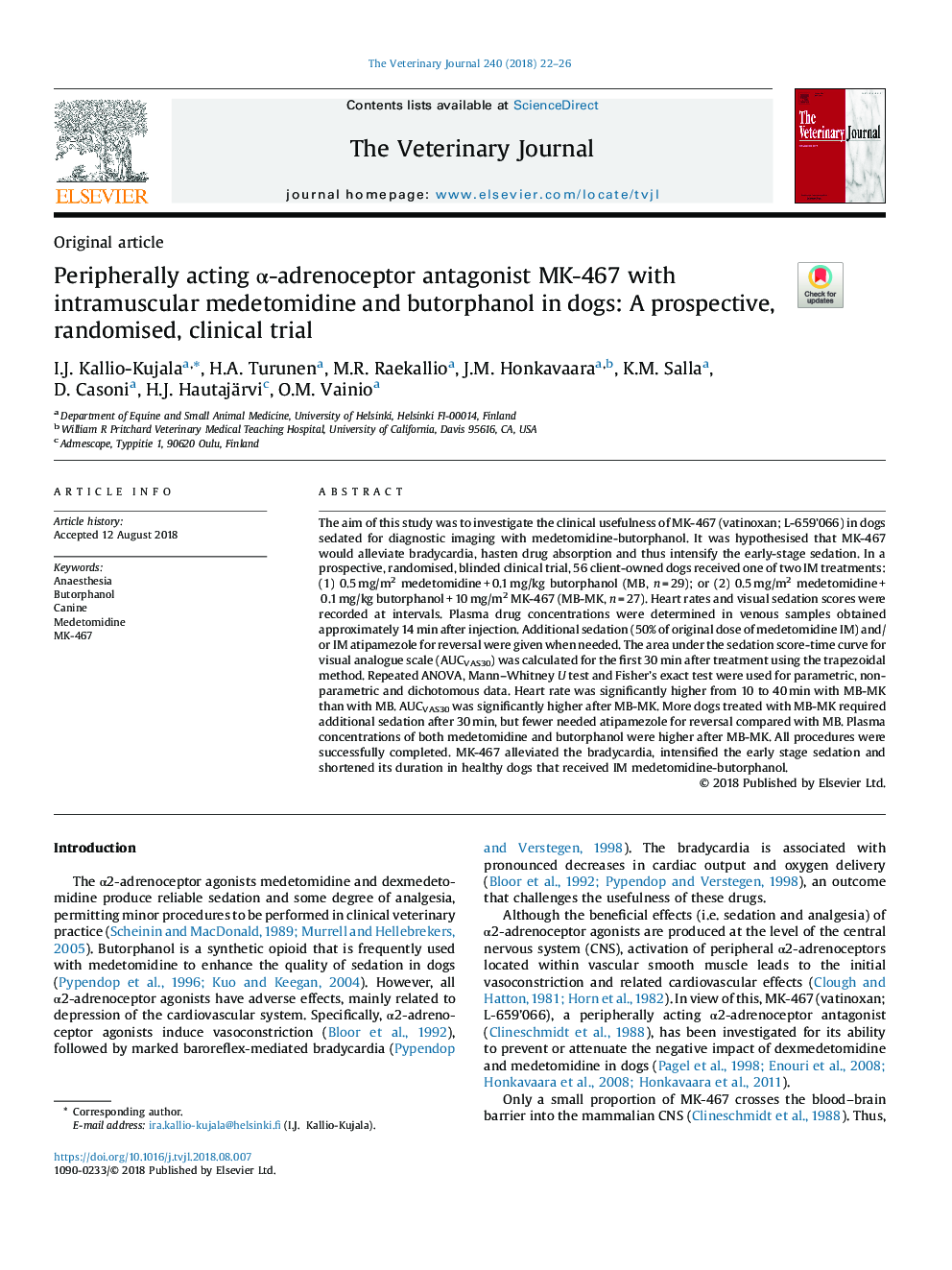| Article ID | Journal | Published Year | Pages | File Type |
|---|---|---|---|---|
| 10143221 | The Veterinary Journal | 2018 | 5 Pages |
Abstract
The aim of this study was to investigate the clinical usefulness of MK-467 (vatinoxan; L-659'066) in dogs sedated for diagnostic imaging with medetomidine-butorphanol. It was hypothesised that MK-467 would alleviate bradycardia, hasten drug absorption and thus intensify the early-stage sedation. In a prospective, randomised, blinded clinical trial, 56 client-owned dogs received one of two IM treatments: (1) 0.5 mg/m2 medetomidine + 0.1 mg/kg butorphanol (MB, n = 29); or (2) 0.5 mg/m2 medetomidine + 0.1 mg/kg butorphanol + 10 mg/m2 MK-467 (MB-MK, n = 27). Heart rates and visual sedation scores were recorded at intervals. Plasma drug concentrations were determined in venous samples obtained approximately 14 min after injection. Additional sedation (50% of original dose of medetomidine IM) and/or IM atipamezole for reversal were given when needed. The area under the sedation score-time curve for visual analogue scale (AUCVAS30) was calculated for the first 30 min after treatment using the trapezoidal method. Repeated ANOVA, Mann-Whitney U test and Fisher's exact test were used for parametric, non-parametric and dichotomous data. Heart rate was significantly higher from 10 to 40 min with MB-MK than with MB. AUCVAS30 was significantly higher after MB-MK. More dogs treated with MB-MK required additional sedation after 30 min, but fewer needed atipamezole for reversal compared with MB. Plasma concentrations of both medetomidine and butorphanol were higher after MB-MK. All procedures were successfully completed. MK-467 alleviated the bradycardia, intensified the early stage sedation and shortened its duration in healthy dogs that received IM medetomidine-butorphanol.
Related Topics
Life Sciences
Agricultural and Biological Sciences
Animal Science and Zoology
Authors
I.J. Kallio-Kujala, H.A. Turunen, M.R. Raekallio, J.M. Honkavaara, K.M. Salla, D. Casoni, H.J. Hautajärvi, O.M. Vainio,
